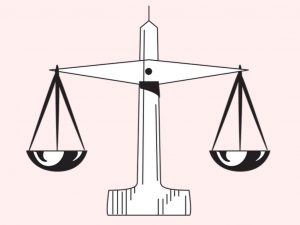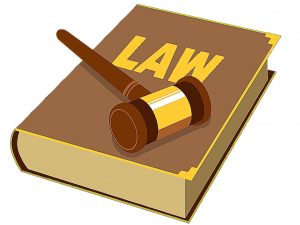Apparently, defamation is one of the areas in the law of tort that no lawyer can sidestep. It is probably the most committed tort in the society today. After doing a lot of keyword research, I found that “cases on defamation” is one of the key phrases searched by lawyers all over the world. For this reason, i decided to write this comprehensive article, highlighting some of the leading cases in defamation. Firstly, I will be listing some of the cases in the tort of defamation and afterwards, each of the cases I mentioned will be explained in full details for you to understand.
It should be noted however, that this work is not just to let students know about the leading cases in defamation. It is also to help researches and lawyers find the cases that will substantiate their arguments in court. Thus, if you are a legal researcher, a lawyer, judge or even a law student and you really need cases to guide you when studying defamation, this is the best articles you should read online. I strongly believe that after reading this work, readers from all over the world will commend this work.
Before moving into the crux of this work, i would like to define some terms and also disclose some primary knowledge about the tort of defamation. This will go a long way to help you understand the cases that will be mentioned here.

MUST READ: How to become a successful lawyer: 10 successful lawyer’s qualities.
What is defamation?
Originally, defamation was simply defined as the publication of a statement which is calculated to injure the reputation of another by exposing him to hatred, contempt or ridicules. However, this definition does not seem to be adequate, in that, it does not embrace injury to trading reputation.
A better definition of defamation was given by Winfield & Jolowicz when they defined defamation as a publication of a statement which reflects on a person’s reputation and tends to lower him in the estimate of right thinking members of the society generally or tend to make them shun or avoid him.
It is pertinent to note that defamation is of two types. The different types of defamation will be mentioned and comprehensively explained below.

Also read: How to answer law problem questions using IRAC method
Types of defamation
Below are the two types of defamation:
1. Libel: Libel is defamation in a permanent form. It is usually written and must also be visible. Thus, statements in newspapers, books, letters, notices, articles are libels. Also, a statue, writing print, mark or sign which is exposed to people’s view and disparaging another’s character, is a libel. One important thing you must note here is that Libel is always actionable per se. That is, without proof of damage.
2. Slander: This is defamation in its transient form, and is often through the medium of spoken words or gestures. Thus, manual language of the deaf and dumb, mimicry and gesticulation generally constitute slender. To hold up an empty purse to indicate that the plaintiff has robbed the defendant would amount to slender because such movement is transient. Any defamatory statement that is temporary and audible is slender.
It is sometimes said that libel is addressed to the eye, while slander is addressed to the ear. Both libel and slander, however, protect the interest of the plaintiff in his reputation. They are two aspects of the tort of defamation and are usually governed by the same principles.

Cases on defamation
Below are some of the leading cases on defamation:
- Cassidy v Daily Mirror Newspapers Ltd
- Mitchell v Faber & Faber
- Derry v Handley
- Norman v Future publishing
- Knupffer v London Express Newspaper Ltd
- Huth v Huth
- Theaker v Richardson
- McMacus v Beckham
- Alexander v North Eastern Railway Co
- McCartan Turkington Breen v Times Newspapers
- Keays v Guardian Newspapers
- Lowe v Associated Newspapers
- George Galloway v Daily Telegraph
- Jones v Jones
Yeah! Those are some of the leading defamation cases you are supposed to know. However, i am not just going to list them the way they are above. If you need detailed information about any of the cases given here, I enjoin you to keep reading this work till the end. The summary of the cases above will be given below.
Also read:
1. Cassidy v Daily Mirror Newspapers Ltd
Citation: (1929) 2 K.B 331
The case of Cassidy v Daily Mirror Newspapers Ltd is evidently one of the leading cases in defamation. The Rule in this case is that; where a plaintiff alleges that the statement, though not defamatory on its face, conveys a defamatory meaning due to special facts or circumstances known to the reader or recipient, he will succeed in an action for defamation. In this instance, the plaintiff must plead and prove such facts because the defendant is entitled to know that meaning of the statement on which the plaintiff relies.

In the celebrated case of Cassidy v Daily Mirror Newspapers Ltd the defendant published the picture of the plaintiff’s husband with another lady and announced their engagement. The plaintiff then bought this action alleging an innuendo that, since the publication was that the defendant was unmarried, she would be regarded as a Mistress by those who knew that they had been living together – cohabiting with a man without being married to him.
2. Mitchell v Faber & Faber
Citation: [1998] EMLR 807
This is another leading case in the tort of defamation. In the case of Mitchell v Faber & Faber, the claimant was a musician who had worked with the rock star Jimi Hendrix during the 1960s. The defendant were the publishers of a book about Hendrix, in which the author said that the claimant had a “strange contempt” for hendrix and routine used words like “bigger” and “coon” in everyday conversation. However, he said that the claimant had no idea that what he said might offend anyone, and did not intend any harm.

The claimant sued on the basis that the book made him appear to be racist. The defendant argued that the book was not defamatory, in that it made clear that the claimant had not intended to offend Hendrix, and that hiqs attitude was simply typical of many people in the UK 30 years ago.
The Court of Appeal held that although it was true that those attitudes were widely held at that time, it was necessary to consider what impression the book would have on people reading it now, and therefore the words could be defamatory.
3. Derry v Handley imo q
Citation: (1867) 16 LT 263
An action in defamation cannot stand except it is communicated to a third party. It is also the rule of law that husbands have a moral duty to communicate defamatory statements to their wife. In this case, the communicated statement constitutes a defamation.
In Derry v Handley, the plaintiff was able to recover when a slender communicated to X by the defendant was repeated by X to his wife, the employer of the plaintiff who as a result dismissed the plaintiff.
The basis of the decision was that the husband of the employer had a moral duty to repeat the slander to his wife. Thus, the repetition and the resulting loss of job, were reasonably foreseeable consequences of such slanderous communication.
Must read: Defences to strict liability in tort: 7 defences a defendant can plead
4. Norman v Future Publishing
Citation: [1998] EWCA Civ 161; [1999] EMLR 325
In order to succeed in an action for defamation, the defamatory statement must be understood with within the context of the publication as a whole. This was corroborated In the case of Norman v Future publishing, the claimant was the famous opera singer, Jessie Norman. She was interviewed by a classical music magazine, and in the article was quoted as saying, with apparent reference to her size, that she never went through doorways sideways because “Honey, I ain’t go no sideways“.

Ms Norman denied making the remark, and claimed that it suggested she was vulgar and undignified, and “conformed to a degrading racist stereotype of a person of African American heritage”. The court of appeal dismissed her appeal against a strike out application, on the ground that the words had to be read within the context of the article as a whole, which portrayed her as a person of high standing and impeccable dignity.
The case also makes the point that the fact that Ms Norman claimed she had never made the remarks was irrelevant if the remark itself was not defamatory; there is no liability in defamation simply for making up a quote from someone and publishing it, unless the alleged quote is defamatory.
5. Knupffer v London Express Newspaper Ltd
Citation: [1944] AC 116
The Rule is that, where a defamatory statement is made to a group, a single member of the group cannot bring an action for defamation. In the leading case of Knupffer v London Express Newspaper Ltd the defendant published an article describing the Young Russia party, a group of Russian emigres, as a Fascist Organization. The group had approximately 2,000 members, 24 of whom were based in the UK. The claimant, a Russian emigrant living in London, sued on the basis that, as a member of the group, the statement defamed him personally.

The House of Lords refused his claim, on the grounds that the statement was aimed at a large class of people, and nothing in it singled him out.
However, where the group referred to is small that the statement could be taken to refer to each and every one of them, one or all of them may be able to successfully sue. So while it is not dangerous to be able to sue for a remark aimed at all of them. Each case will depend on the facts and, in particular, how large the potential group is, and how closely the individuals in that group were associated with the defamatory statement.
MUST READ: Customary courts in Nigeria: Characteristics of customary court in Nigeria.
6. Huth v Huth
Citation: [1915] 3 KB 32
The case of Huth v Huth is another popular case in the tort of defamation. The court was of the view that where a defamatory letter is sent by a defendant, and the content of the letter is read by a third party, which the defendant didn’t forsee it, he will not be liable for defamation.

The facts of Huth v Huth are as follows; a letter was sent in an unsealed envelope by the defendant to the claimant. The butler secretly read the letter without the claimant’s permission. This was not treated as a publication, as the defendant could not have foreseen the butler’s behavior, so he was not liable for defamation
7. Theaker v Richardson
Citation: [1963] 1 WLR 151
The case of Theaker v Richardson, is one of the cases on defamation where communication to a third party was foreseen by the defendant and therefore amounted to publication.
The defendant had written a letter stating that the claimant was “a lying, low down brothel keeping whore and thief”. He put the letter in a sealed envelope and the defendant was held liable for defamation as he had foreseen that the letter might be opened by some person other than the claimant.
8. McMacus v Beckham
Citation: [2002] EWCA Civ 939; [2002] EMLR 880; [2002] 1 WLR 2982
The defendant in this case was the pop star Victoria Bachman, and the defendant was the owner of a shop which sold autographed memorabilia. Mrs Beckham was in the shopping center where the shop was situated, when she spotted a display of photographs of her husband, David Beckham. According to the defendant, she loudly declared the autograph on them to be a fake, and told three customers that the defendant was in the habit of selling fakes, advising them not to buy anything from the shop.
The incident was later reported by the newspaper, and the defendant sued Mrs Beckham argued that this claim should be struck out, because most of the damage had been done by the newspaper reports, and these broke the chain of causation so she could not be held responsible for damage done by third parties.
The Court of Appeal rejected this argument, and said that she could be liable if she realized that the “string” (in other words, the main message) of her remarks was likely to be reported in the papers, or if a reasonable person in her position would have seen that risk, and that the result would be damaged to the defendant’s business. The dispute was eventually settled out of court.

Must read:
9. Alexander v North Eastern Railway Co
Citation: [1865] 6 B & S 340
This is one of the cases where the defences of justification in defamation was successfully pleaded. In Alexander v North Eastern Railway Co, the defendant had said that the claimant, when convicted of a criminal offense, had been offered alternative sentences of a fine or three weeks’ imprisonment. In fact, he was offered a fine or two weeks’ imprisonment, but the defendant successfully pleased justification.
Under s. 5 of the Defendant Act 1952, where a statement comprises two or more different charges against the claimant, it is not necessary to prove that each charge is true, as long as the word which are not proved to be true do not materially injure the claimant’s reputation having regard to the truth of the remaining charges.
10. McCartan Turkington Breen v Times Newspapers
Citation: [2001] 2 AC 277
It is evident that qualified privilege is one of the defences in a defamation action. The House of Lords corroborated this rule in the case of McCartan Turkington Breen v Times Newspapers. In this case, the defendant claimed that a press conference could be regarded as a public meeting under the terms of the Act. The conference in question had been called by a committee formed to try to clear the name of Private Lee Clegg, a British soldier who had been convicted of murder while he was serving in Northern Ireland.
In a story written on the basis of information from the press conference, The Times critised the firm of solicitors who had represented Mr Clegg at his trial and his first, unsuccessful, appeal. The Times pleaded qualify privilege on the grounds that the press conference was a public meeting.
The court of appeal had held that this was not the case, as the meeting was not open to everyone; there was a relationship between the committee and the journalists they invited to it. However, the House of Lords disregard. They stated that the starting point for their decision had to be the importance of freedom of expression.
Also read:
11. Keays v Guardian Newspapers
Citation: [2003] EWHC 1565 (QB)
In this case, the Guardian published a story about Sarah Keays, who was known as the former Mistress of a Cabinet Minister and Mother of his child. After long refusing to talk to the press, Ms Keays had recent decided to publish her story, and the Guardian article speculation about her motives.
The court held that the article could only be read as comment, since the writer could not know as a fact what was in Ms Keays’ mind.
12. Lowe v Associated Newspapers
Citation: [2006] EWHC 320 (QB); [2007] 2 WLR 595; [2006] 3 All ER 357
Lowe v Associated Newspapers arose from an article written by the former politician David Mellor, an avid football fan, about the claimant, the Chairman of Southampton Football Club. The article suggested that the claimant had been guilty of financial trickery in acquiring the club, and underhand behavior towards the club’s manager.
The newspaper pleaded fair comment, and produced some amount of evidence which sought to show that the comments were based on true facts, although the facts themselves were not stated in the eight-line article. The question for the court was whether the fair comment could succeed, even though the facts were not stated in the article and were not necessarily all known by the writer at the time of writing.
Previously, it had been considered that facts on which a comment was based had to the stated in the article, but Eady J concluded that in the light of the protection given to freedom of expression in the Human Right Act, this requirement was too strict. The defence could therefore succeed even if the facts were not explicitly stated, provided that the subject matter is known to the public and is clearly stated. Any fact used to support the defence had to be in existence at the time of writing, and known, at least in general terms to be the person writing.
MUST READ: Ukeje v Ukeje: Case on the inherence right of women
13. George Galloway v Daily Telegraph
Citation: [2006] EWCA Civ 17; [2006] EMLR 221; [2006] HRLR 13
The case of George Galloway v Daily Telegraph is one of the cases on defamation where the court rejected the argument of the defendants that the defamatory statements was a neutral report of allegation against a public figure, which the public had a right to know.
Here, the Telegraph published a story claiming that it had documentation showing that MP George Galloway had received money from Saddam Hussein’s regime. The paper claimed that they were presenting a neutral report of allegation against a public figure, which the public had a right to know about.
This argument was rejected by the judge, who said that the newspaper had not merely reported the content of the documents which formed the basis of the allegations, but had gone further and “embraced the allegation with relish and fervour”.
The paper had made no attempt to check the allegations, and although they had spoken to Mr Galloway, they had not told him that the forthcoming story would suggest he had acted for personal gain and so he had not had the chance to reply to those allegations.
14. Jones v Jones
Citation: (1916) 2. AC. 481
The case of Jones v Jones is one of the cases on defamation that corroborates the legal principle that where there is an imputation affecting a person’s office, profession, calling, Trade or Business, slender will be actionable per se. That is, without proof of special or actual damage.
This seems to be an exception to the general principle that slender is not actionable per se. It should however be noted that for this to apply, it must be spoken of the plaintiff “in the way of his calling”. That is, in relation to his office.
In Jones v Jones, an accusation that a school master had committed adultery, on the school premises, with a married woman employed at the school as a cleaner, was held not to be actionable per se, as it did not relate to his conduct in his profession even though it may have prejudicial effect on his employment.
MUST READ:
Final words
There is no doubt that almost all the countries in the world today have enacted laws prohibiting defamation. In Nigeria for instance, there are federal and state laws against defamation. Nonetheless, It is worthwhile to note that the cases mentioned above are just some of the leading cases in defamation. These are the cases that laid down the major legal principles in defamation.
Hope the article was helpful? I enjoin you to go through the cases again-and-again if you are searching for legal backups to your arguments. This will help you understand the cases more, and be able to use them where appropriate.

Edeh Samuel Chukwuemeka, ACMC, is a lawyer and a certified mediator/conciliator in Nigeria. He is also a developer with knowledge in various programming languages. Samuel is determined to leverage his skills in technology, SEO, and legal practice to revolutionize the legal profession worldwide by creating web and mobile applications that simplify legal research. Sam is also passionate about educating and providing valuable information to people.
Saved as a favorite, I love your website!
This is good to know. I will keep this in mind. thanks
I take pleasure in, lead to I discovered exactly what I was taking a look for. You’ve ended my 4 day long hunt! God Bless you man. Have a great day. Bye